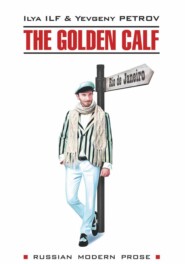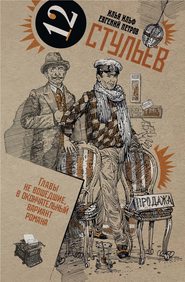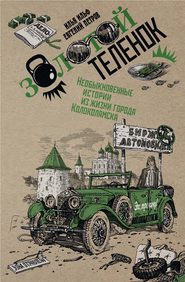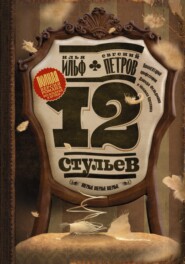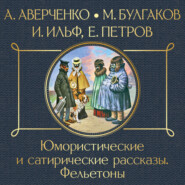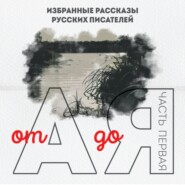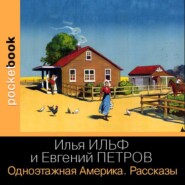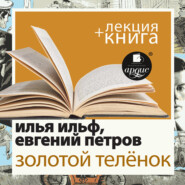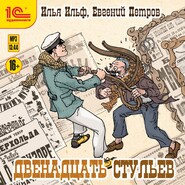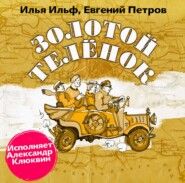По всем вопросам обращайтесь на: info@litportal.ru
(©) 2003-2024.
✖
Одноэтажная Америка / Little Golden America
Автор
Жанр
Серия
Год написания книги
1937
Теги
Настройки чтения
Размер шрифта
Высота строк
Поля
What can be more alluring than a strange city’s lights thickly sown throughout that immense and foreign world which had gone to sleep on the shores of the Atlantic Ocean! From over there, from the side of the ocean, a warm wind wafted. Quite close rose several skyscrapers. It seemed as though one could touch them with one’s hand. Their lighted windows could be counted. Farther away the lights became more and more dense. Among them were especially bright ones, which stretched out in straight and in bent chains (these must have been street lamps). Beyond gleamed a sheer gold dust of tiny lights, and then a dark unlighted swath. (The Hudson? Or was that the East River?) And again the gold mists of boroughs, constellations of unknown streets and squares. In that world of lights, which at first seemed stationary, one could note a certain movement. Now down the river slowly floated the red light of a cutter. A tiny automobile passed down the street. At times, suddenly, somewhere on the other shore of the river, a light as little as a tiny particle of dust would flash and go out. Surely one of (he seven million denizens of New York had turned off the light and gone to bed! Who was he? A clerk? An employee of the elevated railroad? Perhaps a lonely girl had gone to sleep – some salesgirl (there are so many of them in New York). And at this very moment, lying under two thin blankets, stirred by the steamer whistles of the Hudson, was she seeing in her dreams a million dollars?
New York was asleep, and a million Edison lamps were guarding its slumber. Immigrants from Scotland, from Ireland, from Hamburg and Vienna, from Kovno and Bialystok, from Naples and Madrid, from Texas, Dakota, and Arizona, were asleep. Asleep were also immigrants from Latin America, from Australia, from Africa and China. Black, white, and yellow people were asleep. Looking at the scarcely trembling lights, we wanted to find out as soon as possible how these people work, how they amuse themselves, what they dream of, what they hope for, what they eat.
Finally, utterly exhausted, we, too, went to bed. We had had altogether too many impressions for the first day. New York cannot be taken in such large doses. It is a frightful, yet at the same time pleasant, experience to have one’s body lie in a comfortable American bed, in a state of complete rest, while the mind continues to rock on the Normandie, to ride in a wedding-carriage taxi, to run along Broadway, to travel.
In the morning, having awakened on our twenty-seventh story and having looked out of the window, we saw New York in a pellucid morning mist.
We beheld what might be called a peaceful pastoral scene. A few white threads of smoke rose to the sky, while to the spire of a small twenty-story hut was even attached an idyllic and all-metal cockerel. Sixty-storied skyscrapers, which yesterday evening seemed so close, were separated from us by at least ten red iron roofs and a hundred high stacks and skylights, among which laundry hung and the most ordinary cats wandered about. On the walls could be seen advertisements. The walls of the skyscrapers were full of brick dullness. Most of the buildings in New York are made of red brick.
New York opened at once on several planes. The upper plane was occupied by the tops of those skyscrapers which were higher than ours. They were crowned with spires – glass or gold cupolas gleaming in the sun, or towers with large clocks. The towers themselves were the height of a four-story house. On the next plane, open in its entirety to our gaze, in addition to stacks, skylights, and tomcats one could see flat roofs on which were small one-storied houses with gardens, skimpy trees, little brick paths, a small fountain, and even rattan chairs. Here one could pass the time of day to perfection, almost as at Klyazma, inhaling the petrol perfume of flowers, andlistening to the melodic baying of the elevated railway. That monstrosity was on the next plane of New York City. The railway lines of the elevated rest on iron poles and pass on the level of the second and third stories, and only in certain parts of the city do they rise to the fifth or sixth story. This antiquated structure discharges from time to time a horrible clatter that numbs the brain. It causes healthy people to become nervous and the nervous to lose their minds, while the insane jump at the sound in their padded cells and roar like lions. In order to see the last and fundamental plane, the plane of the street, one had to bend out of the window and look down at a right angle. There, as in reversed binoculars, one could see a tiny crossing with tiny automobiles, pedestrians, newspapers strewn on the pavement, and even two rows of shining buttons attached to the lanes where pedestrians are allowed to cross the street.
From the other window one could see the Hudson River, which separates the State of New York from the State of New Jersey. The houses that go down to theHudson are in New York, while the houses on the other side of the river are in Jersey City. We were told that what at first glance seems a strange administrative division has its compensations. One can, for example, live in one State and work in another. One could also indulge in speculations in New York while paying taxes in Jersey. There, by the way, the taxes are not so high. This seems to add colour to the grey monotonous life of a stockbroker. Or one can get married in New York and get divorced in New Jersey, or the other way around. It all depends upon where the divorce laws are easier and where the marriage-breaking process is cheaper. We, for example, when buying the automobile for our journey through the country, insured it in New Jersey, which charges a few dollars less than New York.
4. Appetite Departs While Eating
THE NEWCOMER need have no fear about leaving his hotel and plunging into the New York jungle. Despite the amazing sameness of its streets, it is well-nigh impossible to get lost there.
Yet the secret is simple. The thoroughfares are divided into two types: the perpendicular ones, oravenues; and the horizontal, or streets. Thus the island of Manhattan has been laid out. Parallel to each other are First, Second, and Third avenues. Then parallel to them is Lexington Avenue, Fourth Avenue, a continuation of which from the central railway station bears the name of Park Avenue (that is the street of the wealthy), MadisonAvenue, beautiful (shopping district) Fifth Avenue, Sixth, Seventh, and so forth. Fifth Avenue divides the city into two parts, the East and West. All these avenues (and they are many) are crossed by streets, of which there are several hundred. And if the avenues have certain distinguishing attributes (some are wider, others are narrower; there is an elevated over Second, Third, Sixth, and Ninth; in the middle of Park Avenue is a grass plot; on FifthAvenue tower the Empire State Building and Radio City), the streets are quite indistinguishable, and even old New Yorkers cannot tell one street from another by any out-ward signs. The geometry of New York is violated only by meandering Broadway, which crosses the city diagonally on its run of a score of miles.
The main shoals of pedestrians and automobiles advance along the wide avenues. Under them like coal-mines lie the black and damp, four-track tunnels of subways. Over them is the iron thunder of the elevated. Here are all the types of transport – even several old-fashioned, double-deck autobuses and street-cars. Doubtless, in Kiev, where street-car traffic has been removed from the main street, people would be amazed to hear that down Broadway, the liveliest street in the world, a street-car still hobbles along. Woe to the man who must cross the city, not lengthwise but crosswise, and who would be stricken with the insane idea of taking a taxi-cab for that purpose! His taxi will turn into a street and head straight into a chronic cul-de-sac. While policemen drive the snorting automobile flocks down the length of the avenues, hordes of indignant schlemiehls and maniacs congregate in the dirty narrow lanes that cut the city – no, not lengthwise but crosswise. The queues stretch for several blocks, chauffeurs fidget in their seats, passengers impatiently stick their heads out of windows and, falling back in anguish, open their newspapers.
It is hard to believe, yet it is a fact that some seventy years ago on the corner of Fifth Avenue and Forty-second Street, on the very spot where more automobiles can flock together in five minutes than there are in all of Poland, stood a wooden inn which had the following two significant notices posted for the benefit of American travellers:
IT IS FORBIDDEN TO GO TO BED IN BOOTS
and
IT IS FORBIDDEN FOR MORE THAN SIX GUESTS TO SLEEP IN ONE BED
We left the hotel to lunch somewhere, and soon found ourselves on Forty-second Street. During our first days in New York, no matter where we were bound for, we invariably landed on Forty-second Street.
In the crowd, which carried us along, we heard shreds of that quick New York speech which surely must be as strange to the ear of a Londoner as it is to the ear of a Muscovite. Along the walls sat boys-bootblacks, who drummed their brushes on their crudely fashioned wooden boxes, touting for customers. Street photographers aimed their cameras at the passers-by, choosing usually ladies with escorts or tourists from the sticks. After clicking his camera, the photographer would approach the object of his attack and press on him the printed address of his studio. For twenty-five cents the photographed pedestrian may have a candid photograph of himself, a splendid photograph, in the uninhibited act of raising his leg.
Under the sooty spans of a bridge, in the shadow of which gleamed mud left over from last night’s rain, a man with hat aslant and an open shirt was delivering a speech. About a score of the curious gathered around him. He was a propagandist for the ideas of the recently assassinated United States senator from Louisiana, Huey P. Long. He spoke on distribution of wealth. His listeners asked him questions. He replied. His chief task seemed to be to amuse his audience. Not far from him, on the sunflecked sidewalk stopped a fat Negress of the Salvation Army. She wore an old-fashioned bonnet and run-down shoes. She took a bell out of her suitcase and rang it loudly. The suitcase she placed on the sidewalk at her feet. After waiting for a few disciples of the late-lamented senator to desert to her side, squinting against the sun, she began to bellow something, rolling her eyes and banging her own fat bosom. We went several blocks, but the shouting of the Negress was still distinctly heard in the component noise of this restless city.
In front of a ready-to-wear store a man walked calmly back and forth. On his back and on his chest he carried two identical placards: “This Place Is On Strike”. In the next street were a few more pickets. Over the large show window of a corner store, despite the sunny morning, gleamed the blue letters “Cafeteria” in electric lights. The cafeteria was large, bright, and clean. Along the walls were glass cases filled with beautiful, appetizing edibles. To the left of the entrance was the cashier’s booth. Onhe right was a metal stand with small slot athwart as in a coin bank. From the opening emerged the end of a blue pasteboard stub. Those who entered tugged at this end. We also tugged. The melodic clang of a bell resounded. One stub was in our hand, and through the slot of the coin bank another blue stub popped out. Then we did what all New Yorkers do when they dash into a cafeteria for a hurried bite. From a special table we each took a light brown tray, placed on it forks, spoons, knives, and paper napkins; and, feeling extremely awkward in our heavy overcoats and hats, went to the right end of a glass-enclosed counter. Down the entire length of this counter ran three rows of nickelled pipes on which we conveniently placed our trays and slid them along after placing each dish upon them. The counter itself was a tremendous camouflaged electric plate. Soups, chunks of roast, sausages of various lengths and thicknesses, legs of pork and lamb, meat loaves and roulades, mashed, fried, baked, and boiled potatoes and potatoes curiously shaped in pellets, globules of Brussels sprouts, spinach, carrots, and numerous other side dishes were kept warm here. White chefs in starched nightcaps, aided by neat but heavily rouged and marcelled girls in pink headdresses, were busy placing on the glass cover of the counter plates of food and punching that figure on the stub which indicated the cost of each dish. Then came salads and vinaigrettes, various hors d’oeuvres, fish in cream sauces and fish in jellied sauces. Then came bread, rolls, and traditional round pies with apple, strawberry, and pineapple fillings. Here coffee and milk were issued. We moved down the counter, pushing our trays. On the thick layer of chipped ice were plates of compotes and ice-cream, oranges and grapefruit cut in half, large and small glasses with various juices. Persistent advertising has taught Americans to drink juices before break-fast and lunch. In the juices are vitamins which are presumably beneficial to the customers, while the sale of juices is indubitably of benefit to fruit merchants. We soon succumbed to this American custom. At first we drank the thick yellow orange juice. Then we passed to the translucent green juice of the grapefruit. Then before eating we began to take the grapefruit itself (it is covered with sugar and is eaten with a spoon; its taste reminds one somewhat of the taste of an orange with a dash of lemon in it, although it is juicier than both these fruits). Finally, with some trepidation and not all at once, we began to imbibe the mundane tomato juice, peppering it a bit beforehand. That proved to be the tastiest of all and the most refreshing, and it best suited our South Russian stomachs. The one thing we did not learn to do in America was to eat melon before dinner. Yet that takes the place of honour among American hors d’oeuvres.
In the middle of the cafeteria stood polished wooden tables without tablecloths, and beside them coat-racks. Those who wished could put their hats under their chairs, where there was a special shelf for that purpose. On the tables were stands with bottles of oil, vinegar, catsup, and various other condiments. There was also granulated sugar in a glass flagon wrought in the manner of a pepper-shaker with holes in its metal stopper.
The settling of accounts with the customers was simple. No one could leave the cafeteria without sooner or later passing the cashier’s booth and presenting the stub with the total punched in it. Here also cigarettes were sold and one was free to take a toothpick.
The process of eating was just as superbly rationalized as the production of automobiles or of typewriters.
The automats have progressed farther along this road than the cafeterias. Although they have approximately the same outward appearance as the cafeterias, they differ from the latter in that they have carried the process of pushing food into American stomachs to the point of virtuosity. The walls of the automats are occupied throughout with little glass closets. Near each one of them is a slit for dropping a “nickel” (a five-cent coin). Behind the glass stands a dour sandwich or a glass of juice or a piece of pie. Despite the shining glass and metal, the sausages and cutlets deprived of liberty somehow produce a strange impression. One pities them, like cats at a show. A man drops a nickel, acquires the right to open the little door, takes out his sandwich, carries it to his table and there eats it, again putting his hat under his chair on the special shelf. Then the man goes up to a tap, drops his “nickel,” and out of the tap into the glass drips exactly as much coffee and milk as is supposed to drip. One feels something humiliating, something insulting to man in that. One begins to suspect that the owner of the automat has outfitted his establishment, not in order to present society with a pleasant surprise, but in order to discharge from service poor marcelled girls with pink headdresses and thereby earn a few more dollars.
But automats are not over popular in America. Evidently the bosses themselves feel that there must be some limit to rationalization. Hence, the normal little restaurants, for people of modest means, belonging to mighty trusts are always full. The most popular of these – Childs – has become in America a standard for inexpensive food of good quality. “He dines at Childs”: that means that the man earns $30 a week. In any part of New York one can say: “Let’s have dinner at Childs,” and it would not take him more than ten minutes to reach Childs. At Childs one receives the same clean handsome food as in a cafeteria or an automat. Only there one is not deprived of the small satisfaction of looking at a menu, saying “H’m,” asking the waitress whether the veal is good, and receiving the answer: “Yes, sir!”
Generally speaking, New York is remarkable because it has everything. There you can find the representatives of any nation, secure any dish, any object from an embroidered Ukrainian shirt to a Chinese stick with a bone handle in the shape of a hand, which is used for back-scratching, from Russian caviare and vodka to Chilean soup and Italian macaroni. There are no delicacies in the world that New York cannot offer. But for all of it one must pay in dollars. And we want to talk about the preponderant majority of Americans who can pay only cents and for whom exist Childs, cafeterias, and automats. When describing the latter establishments, we can boldly declare that this is how the average American is fed. Under this concept of the average American is presupposed a man who has a decent job and a decent salary and who from the point of view of capitalism is an example of the healthy prospering American, happy and optimistic, who receives all the blessings of life at a comparatively low price.
The splendid organization of the restaurant business seems to confirm that. Model cleanliness, good quality of produce, an extensive choice of dishes, a minimum of time lost in dining. All that is so. But here is the trouble. All this beautifully prepared food is quite tasteless— colourless in taste. It is not injurious to the stomach. It is most likely even of benefit to it. But it does not present man with any delights, any gustatory satisfaction. When you select in the closets of the automat or on the counter of the cafeteria an attractive piece of roast, and then eat it at your table, having shoved your hat under your chair, you feel like a buyer of shoes which proved to be more handsome than substantial. Americans are used to it. They eat fast, without wasting a single extra minute at the table. They do not eat; they fill up on food, just as an automobile is filled with petrol. The French gourmet who can sit four hours at a dinner, chewing each piece of meat in exultation, washing it down with wine and then smacking every mouthful of coffee with cognac – he is, of course, no model man. But the cold American eater, bereft of the natural human desire to get some satisfaction out of food, evokes amazement.
For a long time we could not understand why American dishes, so appetizing in appearance, are so unappealing in taste. At first we thought the Americans simply do not know how to cook. But then we learned that that alone is not the point: the crux of the matter is in the organization itself, in the very essence of the American economic system. Americans eat a blindingly white but utterly tasteless bread, frozen meat, salty butter, unripe tomatoes, and canned goods.
How does it happen that the richest country in the world, a country of grain growers and cattle raisers, of gold and remarkable industry, a country which has sufficient resources to create a paradise, cannot give the people tasty bread, fresh meat, real butter, and ripe tomatoes?
Near New York we saw waste places overgrown with weeds, forsaken plots of earth. No one sowed grain there, no one raised cattle there. We saw there neither setting hens with chicks nor truck gardens.
“You see,” we were told, “it simply would not pay. We cannot compete here with the monopolists from the West.”
Somewhere in Chicago, in the slaughter-houses, they kill cattle and transport the meat throughout the country in frozen form. From somewhere in California they ship frozen chickens, and green tomatoes which are supposed to ripen in transit. And no one dares to challenge the mighty monopolists to a fight.
Sitting in a cafeteria, we read Mikoyan’s speech, which said that food in a socialist country must be palatable – that it must bring joy to people – and it sounded like poetry to us.
While in America the business of feeding people, as any other business, is built on this single consideration: does it pay or does it not pay? It does not pay to raise cattle and to have truck gardens in New York. Therefore, people eat frozen meat, salty butter, and unripe tomatoes. Some business man discovers that it pays to sell chewing gum, so people are taught to chew this cud. Cinema pays better than theatre; therefore, cinema develops while the theatre is neglected, although from a cultural standpoint the American theatre is much more important than the cinema. The elevated brings an income to certain companies; therefore, New Yorkers become martyrs. Along Broadway, through all the crowded traffic, with a hellish screeching, a street-car hobbles along-only because it pays one man, the owner of an ancient street-car company. All the time we were there we felt an irresistible desire common to all Soviet people to complain and to offer suggestions. We wanted to write to the Soviet control and to the party control and to the Central Committee and to Pravda, but there was no one to complain to, and there is no such thing in America as “a book of suggestions”.
5. We Seek an Angel Without Wings
TIME PASSED. We were still in New York and did not know when or whither we should proceed. Yet, our plan included a journey across the entire continent, from ocean to ocean.
That was a fine, but essentially a quite indefinite, plan. We had made it up in Moscow and had discussed it ardently all the way to America.
We paced scores of kilometres over the decks of the Normandie damp with ocean spray, arguing about the details of that journey and dousing each other with geographic nomenclature. At dinner, drinking the pure but weak wine from the cellars of the General Transatlantic Company, we muttered almost senselessly, “Kahleeforneeya,” “Tyekhas,” or something equally beautiful and enticing.
The plan was astounding because of its simplicity. We were to arrive in New York, buy an automobile, and ride, ride, ride until we arrived in California. Then we would turn around and ride, ride, ride until we arrived in New York. It was all simple and wonderful, like an Andersen fairy-tale. “Tra-ta-ta” sounds the klaxon, “tru-tu-tu” sounds the motor, we ride across the prairie, we swing over mountain chains, we quench the thirst of our trusty machine with the icy water of the Cordilleras, and the great Pacific sun casts its blinding brilliance on our tanned faces.
In short, you can see for yourself that we were a bit “touched,” and roared at each other like chained dogs: “Sierra Nevada,” “Rocky Mountains,” and the like.
But when we stepped on American soil everything proved not so simple and not so romantic.
In the first place, Tyekhas is not called Tyekas, but Texas. But that was only half the trouble.
None of our new friends in New York offered any objections to our purchasing an automobile. Travel in one’s own automobile is the cheapest and most interesting means of transportation in the States. Railroad travel would cost several times as much. Besides, you cannot see America from a train window. It is not a writer’s business to do anything of the kind. So, as for the automobile idea, our suppositions met with approval. The difficulty was in finding a man who could go with us. We could not go by ourselves. We knew the English language well enough to engage a room in a hotel, to order a dinner in a restaurant, to go to a cinema and understand the meaning of a picture – knew it even to the extent of conversing about this or that or the other thing with some indulgent person who was not in a hurry to go anywhere— but we knew no more. Yet more was precisely what we needed. Besides there was one other consideration. The American automobile highway is the kind of place where, as the winged word of the chauffeur has it, you ride straight into the open grave. Here you need an experienced guide.
And so, quite unexpectedly, there opened before us an abyss. And we stood on its very edge. We actually needed a man, who:
could drive a machine to perfection;
knew America to perfection, in order to show it to us properly;
spoke English well;
spoke Russian well;
had sufficient cultural background;
had a good character, otherwise he would spoil the journey;
and
New York was asleep, and a million Edison lamps were guarding its slumber. Immigrants from Scotland, from Ireland, from Hamburg and Vienna, from Kovno and Bialystok, from Naples and Madrid, from Texas, Dakota, and Arizona, were asleep. Asleep were also immigrants from Latin America, from Australia, from Africa and China. Black, white, and yellow people were asleep. Looking at the scarcely trembling lights, we wanted to find out as soon as possible how these people work, how they amuse themselves, what they dream of, what they hope for, what they eat.
Finally, utterly exhausted, we, too, went to bed. We had had altogether too many impressions for the first day. New York cannot be taken in such large doses. It is a frightful, yet at the same time pleasant, experience to have one’s body lie in a comfortable American bed, in a state of complete rest, while the mind continues to rock on the Normandie, to ride in a wedding-carriage taxi, to run along Broadway, to travel.
In the morning, having awakened on our twenty-seventh story and having looked out of the window, we saw New York in a pellucid morning mist.
We beheld what might be called a peaceful pastoral scene. A few white threads of smoke rose to the sky, while to the spire of a small twenty-story hut was even attached an idyllic and all-metal cockerel. Sixty-storied skyscrapers, which yesterday evening seemed so close, were separated from us by at least ten red iron roofs and a hundred high stacks and skylights, among which laundry hung and the most ordinary cats wandered about. On the walls could be seen advertisements. The walls of the skyscrapers were full of brick dullness. Most of the buildings in New York are made of red brick.
New York opened at once on several planes. The upper plane was occupied by the tops of those skyscrapers which were higher than ours. They were crowned with spires – glass or gold cupolas gleaming in the sun, or towers with large clocks. The towers themselves were the height of a four-story house. On the next plane, open in its entirety to our gaze, in addition to stacks, skylights, and tomcats one could see flat roofs on which were small one-storied houses with gardens, skimpy trees, little brick paths, a small fountain, and even rattan chairs. Here one could pass the time of day to perfection, almost as at Klyazma, inhaling the petrol perfume of flowers, andlistening to the melodic baying of the elevated railway. That monstrosity was on the next plane of New York City. The railway lines of the elevated rest on iron poles and pass on the level of the second and third stories, and only in certain parts of the city do they rise to the fifth or sixth story. This antiquated structure discharges from time to time a horrible clatter that numbs the brain. It causes healthy people to become nervous and the nervous to lose their minds, while the insane jump at the sound in their padded cells and roar like lions. In order to see the last and fundamental plane, the plane of the street, one had to bend out of the window and look down at a right angle. There, as in reversed binoculars, one could see a tiny crossing with tiny automobiles, pedestrians, newspapers strewn on the pavement, and even two rows of shining buttons attached to the lanes where pedestrians are allowed to cross the street.
From the other window one could see the Hudson River, which separates the State of New York from the State of New Jersey. The houses that go down to theHudson are in New York, while the houses on the other side of the river are in Jersey City. We were told that what at first glance seems a strange administrative division has its compensations. One can, for example, live in one State and work in another. One could also indulge in speculations in New York while paying taxes in Jersey. There, by the way, the taxes are not so high. This seems to add colour to the grey monotonous life of a stockbroker. Or one can get married in New York and get divorced in New Jersey, or the other way around. It all depends upon where the divorce laws are easier and where the marriage-breaking process is cheaper. We, for example, when buying the automobile for our journey through the country, insured it in New Jersey, which charges a few dollars less than New York.
4. Appetite Departs While Eating
THE NEWCOMER need have no fear about leaving his hotel and plunging into the New York jungle. Despite the amazing sameness of its streets, it is well-nigh impossible to get lost there.
Yet the secret is simple. The thoroughfares are divided into two types: the perpendicular ones, oravenues; and the horizontal, or streets. Thus the island of Manhattan has been laid out. Parallel to each other are First, Second, and Third avenues. Then parallel to them is Lexington Avenue, Fourth Avenue, a continuation of which from the central railway station bears the name of Park Avenue (that is the street of the wealthy), MadisonAvenue, beautiful (shopping district) Fifth Avenue, Sixth, Seventh, and so forth. Fifth Avenue divides the city into two parts, the East and West. All these avenues (and they are many) are crossed by streets, of which there are several hundred. And if the avenues have certain distinguishing attributes (some are wider, others are narrower; there is an elevated over Second, Third, Sixth, and Ninth; in the middle of Park Avenue is a grass plot; on FifthAvenue tower the Empire State Building and Radio City), the streets are quite indistinguishable, and even old New Yorkers cannot tell one street from another by any out-ward signs. The geometry of New York is violated only by meandering Broadway, which crosses the city diagonally on its run of a score of miles.
The main shoals of pedestrians and automobiles advance along the wide avenues. Under them like coal-mines lie the black and damp, four-track tunnels of subways. Over them is the iron thunder of the elevated. Here are all the types of transport – even several old-fashioned, double-deck autobuses and street-cars. Doubtless, in Kiev, where street-car traffic has been removed from the main street, people would be amazed to hear that down Broadway, the liveliest street in the world, a street-car still hobbles along. Woe to the man who must cross the city, not lengthwise but crosswise, and who would be stricken with the insane idea of taking a taxi-cab for that purpose! His taxi will turn into a street and head straight into a chronic cul-de-sac. While policemen drive the snorting automobile flocks down the length of the avenues, hordes of indignant schlemiehls and maniacs congregate in the dirty narrow lanes that cut the city – no, not lengthwise but crosswise. The queues stretch for several blocks, chauffeurs fidget in their seats, passengers impatiently stick their heads out of windows and, falling back in anguish, open their newspapers.
It is hard to believe, yet it is a fact that some seventy years ago on the corner of Fifth Avenue and Forty-second Street, on the very spot where more automobiles can flock together in five minutes than there are in all of Poland, stood a wooden inn which had the following two significant notices posted for the benefit of American travellers:
IT IS FORBIDDEN TO GO TO BED IN BOOTS
and
IT IS FORBIDDEN FOR MORE THAN SIX GUESTS TO SLEEP IN ONE BED
We left the hotel to lunch somewhere, and soon found ourselves on Forty-second Street. During our first days in New York, no matter where we were bound for, we invariably landed on Forty-second Street.
In the crowd, which carried us along, we heard shreds of that quick New York speech which surely must be as strange to the ear of a Londoner as it is to the ear of a Muscovite. Along the walls sat boys-bootblacks, who drummed their brushes on their crudely fashioned wooden boxes, touting for customers. Street photographers aimed their cameras at the passers-by, choosing usually ladies with escorts or tourists from the sticks. After clicking his camera, the photographer would approach the object of his attack and press on him the printed address of his studio. For twenty-five cents the photographed pedestrian may have a candid photograph of himself, a splendid photograph, in the uninhibited act of raising his leg.
Under the sooty spans of a bridge, in the shadow of which gleamed mud left over from last night’s rain, a man with hat aslant and an open shirt was delivering a speech. About a score of the curious gathered around him. He was a propagandist for the ideas of the recently assassinated United States senator from Louisiana, Huey P. Long. He spoke on distribution of wealth. His listeners asked him questions. He replied. His chief task seemed to be to amuse his audience. Not far from him, on the sunflecked sidewalk stopped a fat Negress of the Salvation Army. She wore an old-fashioned bonnet and run-down shoes. She took a bell out of her suitcase and rang it loudly. The suitcase she placed on the sidewalk at her feet. After waiting for a few disciples of the late-lamented senator to desert to her side, squinting against the sun, she began to bellow something, rolling her eyes and banging her own fat bosom. We went several blocks, but the shouting of the Negress was still distinctly heard in the component noise of this restless city.
In front of a ready-to-wear store a man walked calmly back and forth. On his back and on his chest he carried two identical placards: “This Place Is On Strike”. In the next street were a few more pickets. Over the large show window of a corner store, despite the sunny morning, gleamed the blue letters “Cafeteria” in electric lights. The cafeteria was large, bright, and clean. Along the walls were glass cases filled with beautiful, appetizing edibles. To the left of the entrance was the cashier’s booth. Onhe right was a metal stand with small slot athwart as in a coin bank. From the opening emerged the end of a blue pasteboard stub. Those who entered tugged at this end. We also tugged. The melodic clang of a bell resounded. One stub was in our hand, and through the slot of the coin bank another blue stub popped out. Then we did what all New Yorkers do when they dash into a cafeteria for a hurried bite. From a special table we each took a light brown tray, placed on it forks, spoons, knives, and paper napkins; and, feeling extremely awkward in our heavy overcoats and hats, went to the right end of a glass-enclosed counter. Down the entire length of this counter ran three rows of nickelled pipes on which we conveniently placed our trays and slid them along after placing each dish upon them. The counter itself was a tremendous camouflaged electric plate. Soups, chunks of roast, sausages of various lengths and thicknesses, legs of pork and lamb, meat loaves and roulades, mashed, fried, baked, and boiled potatoes and potatoes curiously shaped in pellets, globules of Brussels sprouts, spinach, carrots, and numerous other side dishes were kept warm here. White chefs in starched nightcaps, aided by neat but heavily rouged and marcelled girls in pink headdresses, were busy placing on the glass cover of the counter plates of food and punching that figure on the stub which indicated the cost of each dish. Then came salads and vinaigrettes, various hors d’oeuvres, fish in cream sauces and fish in jellied sauces. Then came bread, rolls, and traditional round pies with apple, strawberry, and pineapple fillings. Here coffee and milk were issued. We moved down the counter, pushing our trays. On the thick layer of chipped ice were plates of compotes and ice-cream, oranges and grapefruit cut in half, large and small glasses with various juices. Persistent advertising has taught Americans to drink juices before break-fast and lunch. In the juices are vitamins which are presumably beneficial to the customers, while the sale of juices is indubitably of benefit to fruit merchants. We soon succumbed to this American custom. At first we drank the thick yellow orange juice. Then we passed to the translucent green juice of the grapefruit. Then before eating we began to take the grapefruit itself (it is covered with sugar and is eaten with a spoon; its taste reminds one somewhat of the taste of an orange with a dash of lemon in it, although it is juicier than both these fruits). Finally, with some trepidation and not all at once, we began to imbibe the mundane tomato juice, peppering it a bit beforehand. That proved to be the tastiest of all and the most refreshing, and it best suited our South Russian stomachs. The one thing we did not learn to do in America was to eat melon before dinner. Yet that takes the place of honour among American hors d’oeuvres.
In the middle of the cafeteria stood polished wooden tables without tablecloths, and beside them coat-racks. Those who wished could put their hats under their chairs, where there was a special shelf for that purpose. On the tables were stands with bottles of oil, vinegar, catsup, and various other condiments. There was also granulated sugar in a glass flagon wrought in the manner of a pepper-shaker with holes in its metal stopper.
The settling of accounts with the customers was simple. No one could leave the cafeteria without sooner or later passing the cashier’s booth and presenting the stub with the total punched in it. Here also cigarettes were sold and one was free to take a toothpick.
The process of eating was just as superbly rationalized as the production of automobiles or of typewriters.
The automats have progressed farther along this road than the cafeterias. Although they have approximately the same outward appearance as the cafeterias, they differ from the latter in that they have carried the process of pushing food into American stomachs to the point of virtuosity. The walls of the automats are occupied throughout with little glass closets. Near each one of them is a slit for dropping a “nickel” (a five-cent coin). Behind the glass stands a dour sandwich or a glass of juice or a piece of pie. Despite the shining glass and metal, the sausages and cutlets deprived of liberty somehow produce a strange impression. One pities them, like cats at a show. A man drops a nickel, acquires the right to open the little door, takes out his sandwich, carries it to his table and there eats it, again putting his hat under his chair on the special shelf. Then the man goes up to a tap, drops his “nickel,” and out of the tap into the glass drips exactly as much coffee and milk as is supposed to drip. One feels something humiliating, something insulting to man in that. One begins to suspect that the owner of the automat has outfitted his establishment, not in order to present society with a pleasant surprise, but in order to discharge from service poor marcelled girls with pink headdresses and thereby earn a few more dollars.
But automats are not over popular in America. Evidently the bosses themselves feel that there must be some limit to rationalization. Hence, the normal little restaurants, for people of modest means, belonging to mighty trusts are always full. The most popular of these – Childs – has become in America a standard for inexpensive food of good quality. “He dines at Childs”: that means that the man earns $30 a week. In any part of New York one can say: “Let’s have dinner at Childs,” and it would not take him more than ten minutes to reach Childs. At Childs one receives the same clean handsome food as in a cafeteria or an automat. Only there one is not deprived of the small satisfaction of looking at a menu, saying “H’m,” asking the waitress whether the veal is good, and receiving the answer: “Yes, sir!”
Generally speaking, New York is remarkable because it has everything. There you can find the representatives of any nation, secure any dish, any object from an embroidered Ukrainian shirt to a Chinese stick with a bone handle in the shape of a hand, which is used for back-scratching, from Russian caviare and vodka to Chilean soup and Italian macaroni. There are no delicacies in the world that New York cannot offer. But for all of it one must pay in dollars. And we want to talk about the preponderant majority of Americans who can pay only cents and for whom exist Childs, cafeterias, and automats. When describing the latter establishments, we can boldly declare that this is how the average American is fed. Under this concept of the average American is presupposed a man who has a decent job and a decent salary and who from the point of view of capitalism is an example of the healthy prospering American, happy and optimistic, who receives all the blessings of life at a comparatively low price.
The splendid organization of the restaurant business seems to confirm that. Model cleanliness, good quality of produce, an extensive choice of dishes, a minimum of time lost in dining. All that is so. But here is the trouble. All this beautifully prepared food is quite tasteless— colourless in taste. It is not injurious to the stomach. It is most likely even of benefit to it. But it does not present man with any delights, any gustatory satisfaction. When you select in the closets of the automat or on the counter of the cafeteria an attractive piece of roast, and then eat it at your table, having shoved your hat under your chair, you feel like a buyer of shoes which proved to be more handsome than substantial. Americans are used to it. They eat fast, without wasting a single extra minute at the table. They do not eat; they fill up on food, just as an automobile is filled with petrol. The French gourmet who can sit four hours at a dinner, chewing each piece of meat in exultation, washing it down with wine and then smacking every mouthful of coffee with cognac – he is, of course, no model man. But the cold American eater, bereft of the natural human desire to get some satisfaction out of food, evokes amazement.
For a long time we could not understand why American dishes, so appetizing in appearance, are so unappealing in taste. At first we thought the Americans simply do not know how to cook. But then we learned that that alone is not the point: the crux of the matter is in the organization itself, in the very essence of the American economic system. Americans eat a blindingly white but utterly tasteless bread, frozen meat, salty butter, unripe tomatoes, and canned goods.
How does it happen that the richest country in the world, a country of grain growers and cattle raisers, of gold and remarkable industry, a country which has sufficient resources to create a paradise, cannot give the people tasty bread, fresh meat, real butter, and ripe tomatoes?
Near New York we saw waste places overgrown with weeds, forsaken plots of earth. No one sowed grain there, no one raised cattle there. We saw there neither setting hens with chicks nor truck gardens.
“You see,” we were told, “it simply would not pay. We cannot compete here with the monopolists from the West.”
Somewhere in Chicago, in the slaughter-houses, they kill cattle and transport the meat throughout the country in frozen form. From somewhere in California they ship frozen chickens, and green tomatoes which are supposed to ripen in transit. And no one dares to challenge the mighty monopolists to a fight.
Sitting in a cafeteria, we read Mikoyan’s speech, which said that food in a socialist country must be palatable – that it must bring joy to people – and it sounded like poetry to us.
While in America the business of feeding people, as any other business, is built on this single consideration: does it pay or does it not pay? It does not pay to raise cattle and to have truck gardens in New York. Therefore, people eat frozen meat, salty butter, and unripe tomatoes. Some business man discovers that it pays to sell chewing gum, so people are taught to chew this cud. Cinema pays better than theatre; therefore, cinema develops while the theatre is neglected, although from a cultural standpoint the American theatre is much more important than the cinema. The elevated brings an income to certain companies; therefore, New Yorkers become martyrs. Along Broadway, through all the crowded traffic, with a hellish screeching, a street-car hobbles along-only because it pays one man, the owner of an ancient street-car company. All the time we were there we felt an irresistible desire common to all Soviet people to complain and to offer suggestions. We wanted to write to the Soviet control and to the party control and to the Central Committee and to Pravda, but there was no one to complain to, and there is no such thing in America as “a book of suggestions”.
5. We Seek an Angel Without Wings
TIME PASSED. We were still in New York and did not know when or whither we should proceed. Yet, our plan included a journey across the entire continent, from ocean to ocean.
That was a fine, but essentially a quite indefinite, plan. We had made it up in Moscow and had discussed it ardently all the way to America.
We paced scores of kilometres over the decks of the Normandie damp with ocean spray, arguing about the details of that journey and dousing each other with geographic nomenclature. At dinner, drinking the pure but weak wine from the cellars of the General Transatlantic Company, we muttered almost senselessly, “Kahleeforneeya,” “Tyekhas,” or something equally beautiful and enticing.
The plan was astounding because of its simplicity. We were to arrive in New York, buy an automobile, and ride, ride, ride until we arrived in California. Then we would turn around and ride, ride, ride until we arrived in New York. It was all simple and wonderful, like an Andersen fairy-tale. “Tra-ta-ta” sounds the klaxon, “tru-tu-tu” sounds the motor, we ride across the prairie, we swing over mountain chains, we quench the thirst of our trusty machine with the icy water of the Cordilleras, and the great Pacific sun casts its blinding brilliance on our tanned faces.
In short, you can see for yourself that we were a bit “touched,” and roared at each other like chained dogs: “Sierra Nevada,” “Rocky Mountains,” and the like.
But when we stepped on American soil everything proved not so simple and not so romantic.
In the first place, Tyekhas is not called Tyekas, but Texas. But that was only half the trouble.
None of our new friends in New York offered any objections to our purchasing an automobile. Travel in one’s own automobile is the cheapest and most interesting means of transportation in the States. Railroad travel would cost several times as much. Besides, you cannot see America from a train window. It is not a writer’s business to do anything of the kind. So, as for the automobile idea, our suppositions met with approval. The difficulty was in finding a man who could go with us. We could not go by ourselves. We knew the English language well enough to engage a room in a hotel, to order a dinner in a restaurant, to go to a cinema and understand the meaning of a picture – knew it even to the extent of conversing about this or that or the other thing with some indulgent person who was not in a hurry to go anywhere— but we knew no more. Yet more was precisely what we needed. Besides there was one other consideration. The American automobile highway is the kind of place where, as the winged word of the chauffeur has it, you ride straight into the open grave. Here you need an experienced guide.
And so, quite unexpectedly, there opened before us an abyss. And we stood on its very edge. We actually needed a man, who:
could drive a machine to perfection;
knew America to perfection, in order to show it to us properly;
spoke English well;
spoke Russian well;
had sufficient cultural background;
had a good character, otherwise he would spoil the journey;
and







